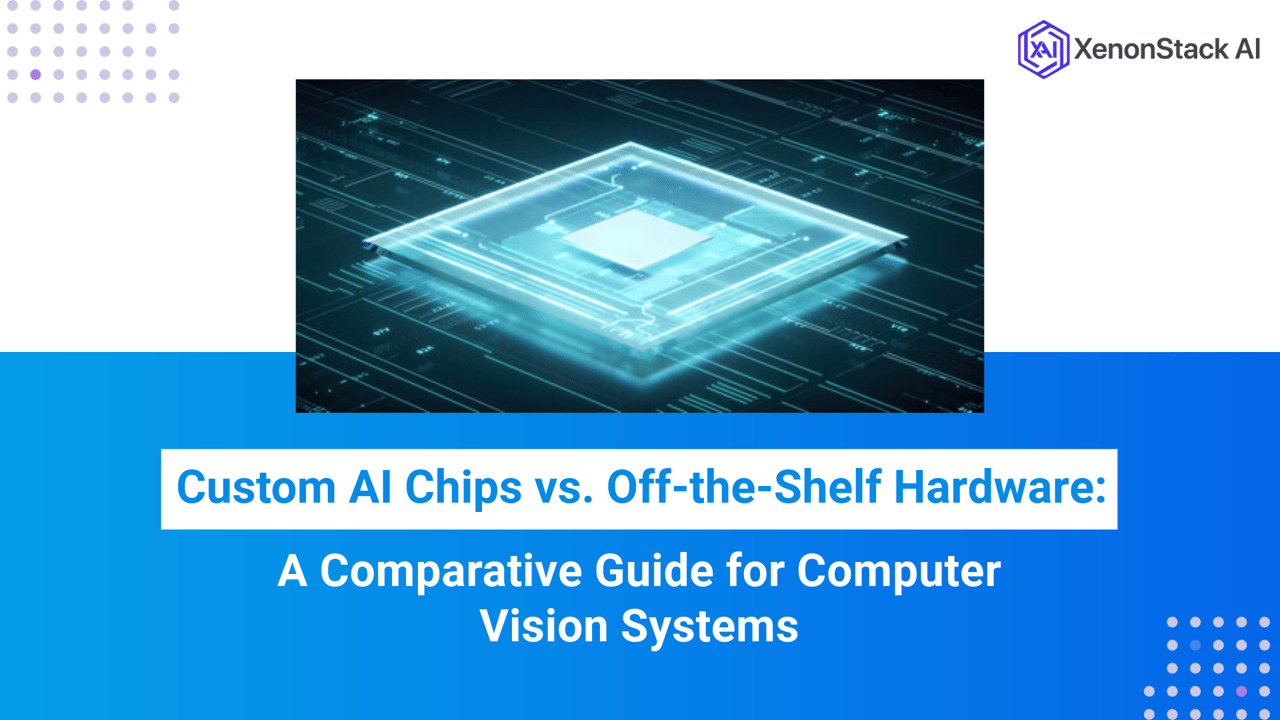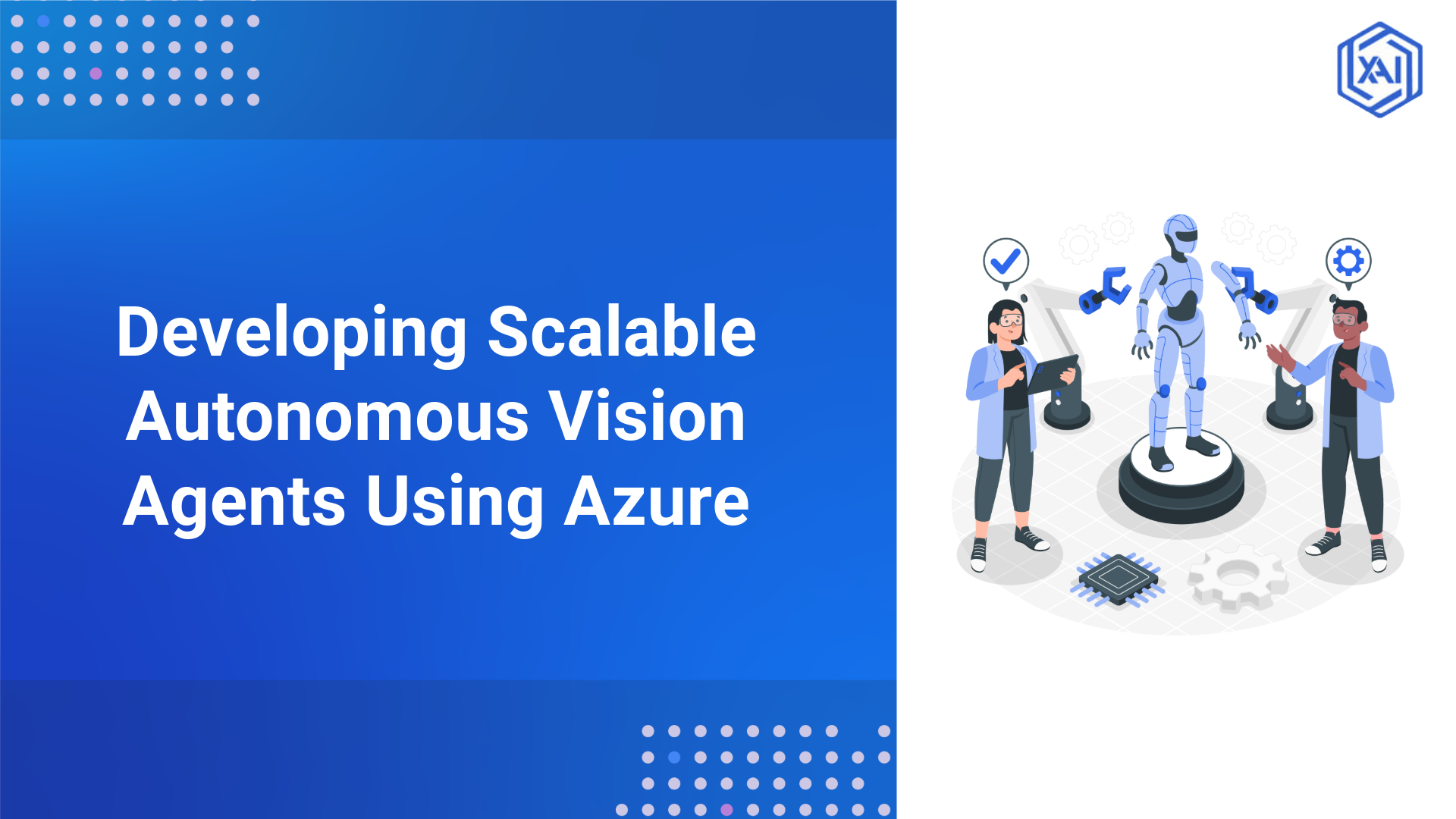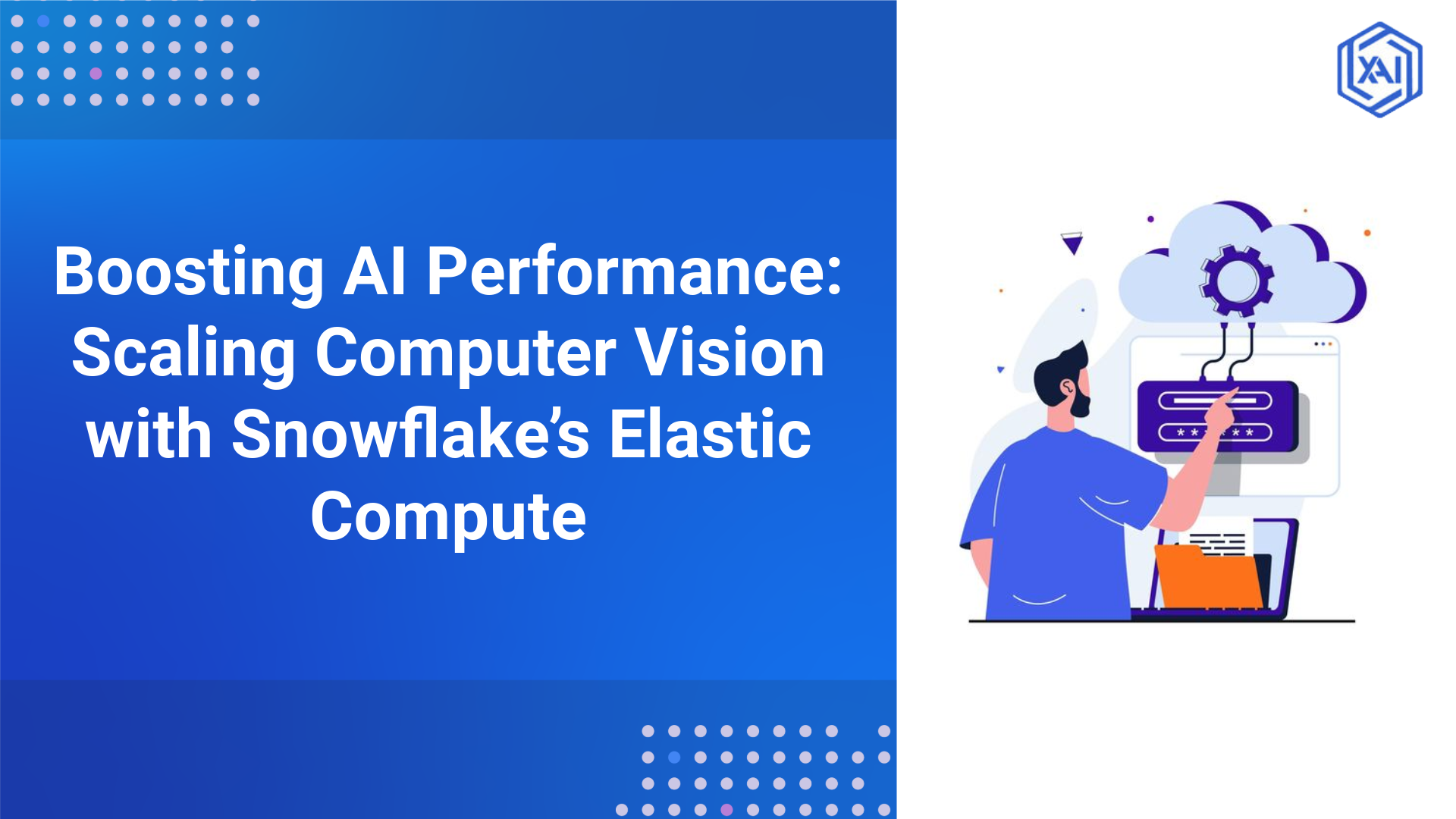
Computer vision has emerged as a transformative technology, revolutionizing industries ranging from healthcare and security to autonomous driving and industrial automation. At the heart of any AI-powered vision system lies its hardware, which determines how efficiently it can process vast amounts of image and video data. As the demand for real-time, high-accuracy computer vision applications grows, the choice of hardware acceleration becomes critical.
The two primary options for hardware acceleration in computer vision are custom AI chips and off-the-shelf hardware solutions. This blog delves into the nuances of both options, exploring their differences, benefits, and drawbacks to help businesses and developers make informed decisions.
Understanding the Hardware Requirements for Computer Vision Systems
The Role of AI Chips in Computer Vision
Computer vision tasks, such as object detection, image classification, and semantic segmentation, require immense computational power. These tasks involve processing high-resolution images and videos, running complex deep-learning models, and delivering real-time results with minimal latency. AI chips, whether custom or off-the-shelf, are designed to accelerate these workloads by optimizing parallel processing and reducing power consumption.
Computational Needs of AI-Based Vision Systems
The hardware for computer vision must meet several demanding requirements:
-
Real-Time Processing: High-resolution images and videos must be processed in real-time, especially in applications like autonomous driving and surveillance.
-
Deep Learning Model Efficiency: The hardware must efficiently handle large-scale neural networks, such as convolutional neural networks (CNNs) and transformers.
-
Low Latency: For applications like robotics and augmented reality, even a few milliseconds of delay can be critical.
-
Power Efficiency: Edge computing applications, such as drones and IoT devices, require hardware that delivers high performance without draining battery life.
Custom AI Chips: Benefits and Key Features Explained
What Are Custom AI Chips?
Custom AI chips, also known as Application-Specific Integrated Circuits (ASICs), are designed specifically for AI workloads. These chips are tailored to optimize performance for specific tasks, such as image recognition or natural language processing. Tech giants like Google (with its Tensor Processing Units or TPUs), Tesla (with its Full Self-Driving or FSD Chip), and Apple (with its Neural Engine) have invested heavily in custom AI chips to enhance the efficiency of their AI-driven products.
Key Benefits of Custom AI Chips
-
Optimized Performance: Custom AI chips are designed from the ground up for specific tasks, resulting in superior performance and efficiency compared to general-purpose hardware.
-
Lower Power Consumption: By eliminating unnecessary components, custom chips consume less power, making them ideal for edge computing and mobile applications.
-
Reduced Latency: Custom chips are optimized for specific algorithms, enabling faster inference speeds and real-time processing.
-
Scalability: For large enterprises with consistent and high-volume AI workloads, custom chips can be scaled to meet growing demands.
Limitations and Challenges
-
High Development Costs: Designing and fabricating custom AI chips requires significant investment in research and development, often running into millions of dollars.
-
Longer Development Time: The process of designing, testing, and optimizing custom chips can take several years, making it unsuitable for businesses with urgent needs.
-
Limited Flexibility: Custom chips are highly specialized, meaning they may not be adaptable to new AI models or applications outside their intended use case.
Unlock the full potential of AI-driven computer vision solutions to transform your business with advanced technologies. Explore how XenonStack AI can elevate your vision systems for smarter, more efficient applications.
Off-the-Shelf Hardware for Computer Vision
Types of Off-the-Shelf AI Hardware
GPUs (Graphics Processing Units)
NVIDIA’s CUDA-enabled GPUs, such as the A100 and RTX series, are widely used for AI workloads due to their parallel processing capabilities.
TPUs (Tensor Processing Units)
Google’s cloud-based TPUs are optimized for TensorFlow and offer high performance for specific AI tasks.
FPGAs (Field Programmable Gate Arrays)
These configurable chips strike a balance between flexibility and efficiency, making them suitable for a variety of AI applications.
Edge AI Accelerators
Dedicated chips like Intel’s Movidius Myriad and NVIDIA’s Jetson series are designed for edge computing, offering power-efficient performance for real-time applications.
Advantages of Using Prebuilt AI Hardware
-
Faster Deployment: Off-the-shelf hardware is readily available, allowing businesses to deploy AI solutions without lengthy R&D cycles.
-
Lower Initial Costs: Prebuilt solutions eliminate the need for costly custom chip design, making them more accessible for startups and small businesses.
-
Broad Compatibility: Off-the-shelf hardware supports popular AI frameworks like TensorFlow, PyTorch, and ONNX, ensuring compatibility with a wide range of AI models.
-
Ease of Upgradation: As new hardware versions are released, businesses can easily upgrade their systems without redesigning their infrastructure.
Potential Drawbacks
-
Higher Power Consumption: General-purpose hardware like GPUs may not be as power-efficient as custom chips, leading to higher operational costs.
-
Inferior Performance for Specialized Tasks: Off-the-shelf solutions may lack the optimization required for specific applications, resulting in slower performance.
-
Limited Scalability: While off-the-shelf hardware is suitable for small to medium-scale workloads, it may struggle to handle enterprise-level demands efficiently.
Performance Comparison: Custom AI Chips vs. Off-the-Shelf Hardware
- Processing Speed and Efficiency: Custom AI chips often outperform off-the-shelf hardware in terms of processing speed and efficiency. For example, Tesla’s FSD chip is specifically designed for autonomous driving tasks, delivering faster inference speeds compared to NVIDIA’s general-purpose GPUs. However, GPUs and TPUs still offer competitive performance for a wide range of AI workloads, making them a viable option for many applications.
- Power Consumption and Heat Management: Custom AI chips are designed with power efficiency in mind, making them ideal for edge computing and mobile applications. In contrast, GPUs and other off-the-shelf solutions tend to consume more power, which can lead to higher operational costs and heat management challenges.
- Scalability and Flexibility: Off-the-shelf hardware provides greater flexibility, allowing businesses to scale their AI capabilities without redesigning their hardware infrastructure. Custom chips, while highly efficient, may lack the adaptability required for evolving AI models and applications.
Cost Analysis: Custom AI Chips vs. Off-the-Shelf Hardware
Development Costs of Custom AI Chips
The development of custom AI chips involves significant upfront costs, including design, testing, and fabrication. These costs can run into millions of dollars, making custom chips a viable option only for large enterprises with substantial budgets.
Cost Efficiency of Off-the-Shelf Hardware
Off-the-shelf solutions offer cost savings in the short term, as they eliminate the need for custom chip development. However, over time, the higher power consumption and limited scalability of general-purpose hardware may lead to increased operational costs.
Real-World Applications: Industry Use Cases for Computer Vision
Autonomous Vehicles
Tesla’s custom FSD chips are a prime example of how custom AI hardware can deliver superior performance for autonomous driving. These chips are optimized for real-time object detection and decision-making, enabling Tesla vehicles to navigate complex environments with minimal latency.
Surveillance and Security Systems
Edge AI hardware like NVIDIA’s Jetson series is widely used in surveillance systems for real-time object detection and facial recognition. These solutions provide the computational power needed to process high-resolution video feeds efficiently.
Industrial Automation
In manufacturing, custom AI chips are used for high-speed defect detection in assembly lines. These chips enable real-time analysis of product quality, reducing waste and improving efficiency.
Healthcare and Medical Imaging
AI-driven diagnostics rely on specialized hardware for real-time image analysis. Custom AI chips are used in medical imaging applications to detect anomalies in X-rays, MRIs, and CT scans with high accuracy.
Emerging Trends and Future Technologies in AI Hardware
-
Evolution of AI Chip Design: Advancements in AI hardware, such as neuromorphic computing and quantum AI, are poised to reshape the landscape of computer vision. Neuromorphic chips, which mimic the structure and function of the human brain, promise to deliver unprecedented efficiency and performance for AI workloads.
-
The Rise of Edge AI and Its Impact: The growing demand for real-time processing at the edge is driving the development of smaller, power-efficient AI chips. These chips enable devices to perform complex computations locally, reducing reliance on cloud computing and improving response times.
-
Customization vs. Standardization: As AI hardware technology continues to evolve, the balance between custom and off-the-shelf solutions will depend on industry needs. Hybrid approaches, combining the efficiency of custom chips with the flexibility of off-the-shelf hardware, may emerge as the optimal solution for future computer vision applications.
Custom AI Chips vs. Off-the-Shelf Hardware: Which is Right for You?
The choice between custom AI chips and off-the-shelf hardware ultimately depends on several factors, including budget, performance requirements, and scalability. Large enterprises with high-performance AI demands and substantial budgets may benefit from investing in custom AI chips, as they offer superior efficiency and scalability. On the other hand, startups and small businesses may find off-the-shelf solutions more practical, as they provide faster deployment and lower initial costs.
As the field of AI hardware continues to advance, hybrid solutions that combine the strengths of both custom and off-the-shelf components may become the preferred approach. By carefully evaluating their specific needs and long-term objectives, businesses can make informed decisions that align with their goals and drive innovation in computer vision applications.
Next Steps in AI Chip Adoption
Talk to our experts about implementing custom AI chips for computer vision, how industries and different departments use AI-driven solutions and decision intelligence to become more efficient and scalable. Leverage AI to automate and optimize computer vision systems, improving performance and responsiveness.


